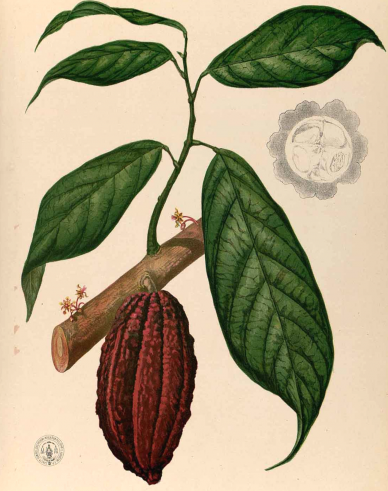
In a reflection of the profound importance of chocolate as a commodity, rival teams of researchers drawn from government, the academy, and the candy industry have cracked the cocoa code�specifically, they’ve sequenced the genomes of two important cacao bean cultivars. As reported at Nature News and elsewhere, a French team with support from chocolate giant Hershey has achieved the first peer-reviewed publication of a cacao sequence for the Criollo cultivar, a hard-to-grow heirloom varietal used in expensive chocolates; another team backed by Hershey’s rival, Mars, meanwhile has published a preliminary sequencing of a popularly-farmed Forastero hybrid.
Do we have to worry about patented chocolate genomes? It’s unlikely�in fact the collaborative sequencing initiatives, both of which receive significant governmental support, were set up precisely to forestall patent filings by bringing these genomes into the public record�perhaps a harbinger of newfound corporate respect for the public commons.
In another culinary-genetic coup, researchers have sequenced the genome of the wild strawberry, Fragaria vesca. While of relatively little culinary importance, genes of the wild strain may offer ways to bolster disease resistance and vigor in its cultivated cousins.
It’s enough to get mouths watering not only for chocolate-dipped strawberries, but for fresh science that extends beyond the bounds of the culinary. The flavenoid-rich, biochemically complex Theobroma cacao in particular may yet yield novel compounds whose impact reaches beyond the dessert tray.
I’m reminded of Le Whif, the “breathable chocolate” developed by Harvard’s David Edwards; key aspects of the delivery technology emerged from Edwards’ work on systems for administering breathable insulin and getting vaccines to lung tissue. Le Whif emerged from the cross-pollinating foment of Edwards’ atelier-like “artscience” development process, in which cross-disciplinary teams of scientists and creatives play with one another’s ideas, regularly staging “exhibitions” in place of seminars or conferences. With the cacao genomic data now publicly available, it’s fun to play around with the kind of far-out notions that could one day be realized. What if we could genetically implant glands for chocolate and other flavors, with their secretion under conscious control? The same sort of glandular hacks could provide needed drugs or other forms of biochemical support as well.
From the cacao and strawberry genomes to designer glands offering savory and sweet secretions�well, I said it was a far-out notion, more reminiscent of the Culture novels of Iain M. Banks than anything likely to come out of a laboratory in our lifetimes. But it’s the kind of thing that might arise from labs that are less like labs and more like kitchens.
Taste of Tech is a series exploring the science and technology of food produced by Gearfuse and the food channel at GOOD.com, edited by Nicola Twilley.
 Gearfuse Technology, Science, Culture & More
Gearfuse Technology, Science, Culture & More

